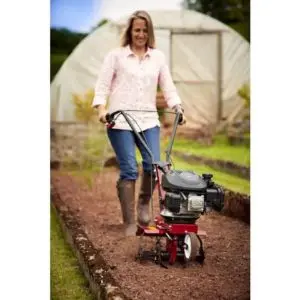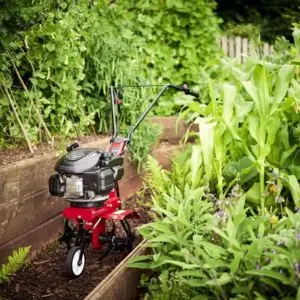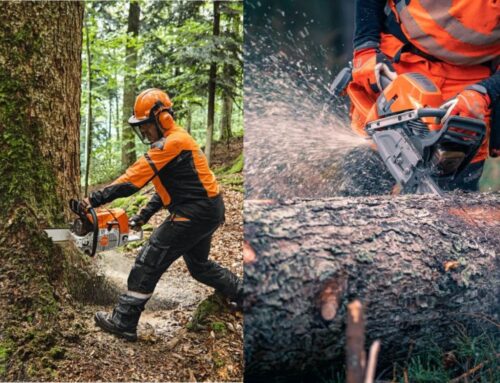
Dig Smart, Not Hard with Our Tillers, Rotavators & Cultivators
When it comes to creating the perfect garden, what lies beneath the surface matters just as much as what you plant. Proper soil preparation lays the groundwork for strong, healthy growth—whether you’re sowing grass seed, raising vegetables, or filling borders with blooms. And while manual digging might have its place, there’s a smarter, faster way to break ground: using a tiller, rotavator, or cultivator.
If you’re wondering what the differences are—and which one is right for your garden—you’re in exactly the right place. In this guide, we’ll discuss the various types of tilling machines, explain the benefits of each, and help you choose the best model to suit your own requirements…
What’s the Difference Between Tillers, Rotavators and Cultivators?
 The terms tiller, rotavator, and cultivator are often used interchangeably, but there are some key differences that can make all the difference when you’re choosing the right machine to prepare your soil.
The terms tiller, rotavator, and cultivator are often used interchangeably, but there are some key differences that can make all the difference when you’re choosing the right machine to prepare your soil.
Rotavators
A rotavator is the heavyweight of the group. With large rotating tines and powerful engines, these machines are built to break up hard, compacted ground. A rotavator doesn’t just scratch the surface—it churns, aerates and transforms dense soil into a loose, fertile base for planting. They’re ideal for large plots, heavy clay soils, and garden renovation projects.
Cultivators
 A cultivator, on the other hand, is lighter and more nimble. Designed for working on already-loosened ground, a garden cultivator is perfect for breaking up light topsoil, rooting out weeds, and mixing in compost. When you’re prepping a flower bed or small vegetable patch, cultivator tools offer a more delicate touch with the convenience of greater manoeuvrability.
A cultivator, on the other hand, is lighter and more nimble. Designed for working on already-loosened ground, a garden cultivator is perfect for breaking up light topsoil, rooting out weeds, and mixing in compost. When you’re prepping a flower bed or small vegetable patch, cultivator tools offer a more delicate touch with the convenience of greater manoeuvrability.
Tillers
The term tiller is more general and can refer to either type of machine. In many cases, a garden cultivator tiller is used to describe smaller electric tillers or compact cordless cultivators, which are ideal for light garden maintenance work.
Why Use a Tilling Machine Instead of Manual Tools?
 If you’ve ever spent an afternoon with a fork or spade trying to break up stubborn ground, you already know how tough manual soil preparation can be. Switching to a petrol or electric tiller cultivator saves not just time and money, but your back as well.
If you’ve ever spent an afternoon with a fork or spade trying to break up stubborn ground, you already know how tough manual soil preparation can be. Switching to a petrol or electric tiller cultivator saves not just time and money, but your back as well.
One of the greatest benefits of cultivating soil mechanically is sheer efficiency. A rotavator can break up large areas in minutes—what might take hours by hand. It evenly distributes organic matter like compost or manure, increases aeration and improves drainage, which are all essential benefits of soil cultivation.
Using a cultivator or rotavator also improves consistency. Manual digging often leaves pockets of compacted soil or clumps that restrict root growth. By using a tilling machine, you ensure an even texture throughout the soil bed, helping roots spread more easily and absorb nutrients more effectively. Whether you’re growing vegetables, planting turf, or simply refreshing a tired border, a small cultivator can significantly improve your results.
Choosing the Right Tiller for Your Garden
So, how do you decide which tiller is right for your needs? That depends on a few key factors—let’s break them down.
Garden Size and Soil Type
 Smaller gardens with flower beds or raised plots usually benefit from a front-tine cultivator, many of which are electric garden cultivators. They are lightweight, easy to control, and perfect for weaving around tight spaces or existing plants.
Smaller gardens with flower beds or raised plots usually benefit from a front-tine cultivator, many of which are electric garden cultivators. They are lightweight, easy to control, and perfect for weaving around tight spaces or existing plants.
For larger areas or neglected, compacted soil, a rear-tine tiller is the way to go. These heavy-duty petrol rotavators can handle deeper tilling and tougher terrain, making them ideal for allotments, new lawns, or heavy clay soil.
Power Source: Petrol or Electric?
A petrol cultivator offers more power and independence from cables, making it suitable for bigger gardens or off-grid use. These garden machines are better equipped for deep tilling and tougher soil conditions. Brands like Camon and Honda are trusted names in this category.
If you’re tackling smaller jobs or prefer a quieter, easier start-up, an electric tiller cultivator might be your best bet. They are light, low-maintenance, and emission-free—perfect for eco-conscious gardeners. A cordless cultivator gives you the added freedom of movement without trailing leads, which can be particularly handy in awkward or narrow spaces.
Working Width and Depth
 For precise work between vegetable rows or flower beds, a small cultivator with a working width of 20–35 cm is ideal. For broader plots, look for machines with a width in excess of this figure to speed up your work.
For precise work between vegetable rows or flower beds, a small cultivator with a working width of 20–35 cm is ideal. For broader plots, look for machines with a width in excess of this figure to speed up your work.
Depth is equally important. Most soil cultivators can be adjusted to suit different tasks. A shallow setting of 7.5–10 cm is great for mixing compost or preparing beds. For deeper soil turning, such as lawn installation, aim for 15–20 cm. Adjustable depth lets you tailor the process without overworking the soil.
Comfort and Handling
Don’t underestimate the value of an ergonomic design. Whether you’re using a lightweight hand cultivator or powerful rotavator, comfort matters. Look for height-adjustable handles, cushioned grips, and a well-balanced frame. Wheel design is also key—some gardeners prefer a single front wheel for better visibility, while others like the added stability of two rear wheels.
Special Requirements
Working with clay soil? Choose a petrol-powered rotavator with sharp, heavy-duty tines. Watering the soil a day or two before tilling can also make the process smoother.
If you have limited mobility, opt for a mini cultivator/ electric cultivator that’s light to lift and easy to push. Look for features like soft-start buttons, folding handles, and low vibration levels to make your tilling easier and more enjoyable.
 Find Compact Cultivators and Heavy-Duty Rotavators Here
Find Compact Cultivators and Heavy-Duty Rotavators Here
There’s no need to struggle with a spade when you could be gliding through your soil with the help of one of our high-quality garden tillers, which is why we stock such an extensive ranges of tillers, rotavators and cultivators for sale. Whether you’re looking for a compact hand cultivator, ergonomically designed STIHL cultivator, or powerful Camon petrol rotavator, we’ve got something to suit your space and budget.
So, if you’re ready to upgrade your soil prep routine, invest in one of our superb cultivator tools today—because great gardens always start with great soil.




